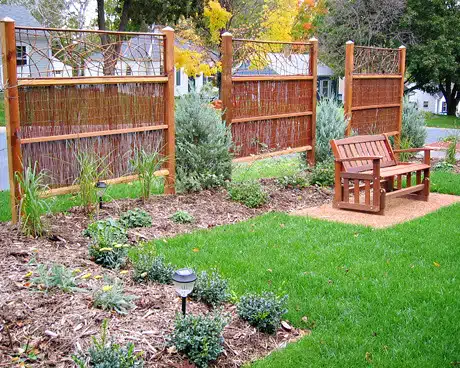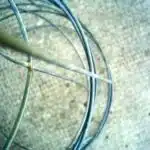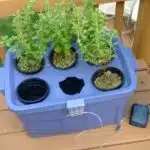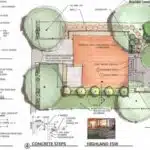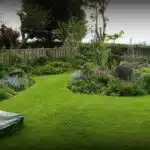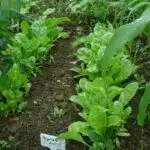Garden trellises are an essential part of any garden design. They are commonly used to support climbing plants, create a vertical garden, and add structure to a garden. Garden trellises come in different designs, shapes, and materials, making them versatile for various gardening needs.
Garden trellises serve several purposes in a garden. They provide the necessary support for climbing plants such as cucumbers, beans, and peas to grow vertically instead of spreading on the ground. This helps maximize space in the garden while also improving air circulation around the plants. Additionally, trellises can be used to create privacy walls or screens by training vines to grow along them. Furthermore, they add aesthetic value to a garden by creating focal points and providing visual interest with their unique designs. As a garden trellis expert, it is important to understand how these structures can serve multiple functions in a garden and help homeowners achieve their desired outdoor space.
Supporting Climbing Plants
Did you know that supporting climbing plants with a garden trellis can increase their yield by up to 50%? This means that investing in a good quality trellis not only provides aesthetic appeal but also enhances the productivity of your garden. There are various types of plants that benefit from using a trellis, including cucumbers, tomatoes, peas, and beans. The trellis provides these plants with the necessary support required for them to grow vertically, which allows for better air circulation and sunlight exposure.
Moreover, garden trellises are not only beneficial for the growth of plants but also provide an excellent opportunity for DIY projects. With simple materials such as wood or PVC pipes, anyone can create custom-made trellises that cater to their specific needs. These DIY projects are cost-effective and allow individuals to personalize their gardens according to their preferences. A well-designed trellis is not only functional but can also add visual interest and character to any garden.
Incorporating a garden trellis into your gardening routine is an excellent way of maximizing garden space while improving plant health and yield. The next section will explore how utilizing vertical garden spaces through the use of trellises can provide more room for planting without compromising on space or productivity.
Maximizing Garden Space
Supporting Climbing Plants with garden trellises is essential for maximizing garden space and increasing the yield of your crops. Trellises are structures that can be made from various materials, such as wood, metal, or PVC pipes, and come in different shapes and sizes. They are used to support climbing plants like cucumbers, tomatoes, and beans that require vertical gardening.
Garden trellises offer several benefits to gardeners who want to grow climbing plants. Firstly, they help save space by allowing these plants to grow vertically instead of sprawling on the ground. This is particularly useful for urban gardens or small gardens where space is limited. Secondly, trellises make it easier to harvest fruits and vegetables since they are off the ground and within reach. Thirdly, they improve air circulation around the plants, which reduces pest problems and promotes healthier growth.
To maximize your garden space further, consider using container gardening or raised beds alongside trellises. Container gardening involves growing plants in pots or containers instead of directly in the soil. This method is ideal for small spaces like balconies or patios where there may not be enough room for a traditional garden bed. Raised beds are another option that allows you to create a growing area above ground level by building a frame and filling it with soil.
Incorporating these methods into your gardening strategy can help you achieve higher yields while also creating an attractive outdoor space. In the next section, we will discuss how improving air circulation around your plants can enhance their growth even further.
Improving Air Circulation
Garden trellises are commonly used to improve air circulation by planting vines for a natural, decorative addition to the landscape. Constructing arches, trellises, and other structures from wood, plastic, or metal, can also be used to support the vines and allow them to increase air circulation in an aesthetically pleasing way. Climbing plants, such as clematis, are ideal choices for trellis structures as they are able to climb nearly any surface. Additionally, trellises can be used to support taller plants, such as tomatoes, to provide additional air circulation around them. Furthermore, the use of trellises in the garden can also be beneficial in providing shade and protection from the wind. Lastly, trellises can also add a decorative element to the garden, whether it is a single trellis or an arbor with a pergola.
Planting Vines
Planting vines can be a beautiful and practical addition to any garden, but it requires careful planning and execution. As a garden trellis expert, I highly recommend using trellises for planting vines as they provide support for the plants to grow vertically while improving air circulation. This results in healthier plants with better yields.
When it comes to planting techniques for vines, it’s crucial to choose the right location and soil conditions. Vines require full sun exposure and well-draining soil that is rich in organic matter. Once the location is set, prepare the soil by digging a hole twice as wide as the root ball, adding compost or other organic fertilizers before planting.
Once planted, proper care instructions are essential for ensuring healthy growth of your vine plants. Water regularly but avoid overwatering as this can lead to root rot. Additionally, pruning is necessary to control growth and promote fruit production, depending on the type of vine planted. With these simple steps and care instructions in mind, planting vines on garden trellises can be an enjoyable experience with beautiful rewards year after year.
In conclusion, planting vines on garden trellises not only adds beauty to your garden but also improves air circulation resulting in healthier plants. By following proper planting techniques and care instructions such as choosing the right location, well-draining soil, and regular watering along with pruning when needed- you can enjoy bountiful fruits or flowers from your vine plants for years to come.
Constructing Arches
Improving air circulation in your garden is crucial for the health and growth of your plants. One way to achieve this is by constructing arches. Arches are a beautiful addition to any garden, and they can also serve as support for vines to grow vertically. As a garden trellis expert, I highly recommend DIY projects that involve constructing arches as they not only add decorative elements to your garden but also provide excellent support for climbing plants.
When it comes to constructing arches, the first step is to choose the right material for the job. Wood, metal or PVC pipes are common materials used in constructing arches. Once you have decided on the material, measurements should be taken carefully so that the arch is sturdy and well-balanced. The next step is to assemble the pieces together using screws or bolts. Depending on how high you want your arch, it may require additional support from stakes or concrete.
A properly constructed arch not only provides support for climbing plants but also improves air circulation in your garden. This results in healthier plants with better yields. Additionally, an arch adds a decorative element, making your garden more visually appealing. With these simple steps and care instructions in mind, constructing an arch can be an enjoyable DIY project with beautiful rewards year after year.
Building Trellises
As a garden trellis expert, improving air circulation is essential to the health and growth of your plants. Alongside constructing arches, building trellises is another cost-effective option for achieving this goal. Trellises are not only functional but can also add a decorative element to your garden. DIY tutorials make building trellises accessible to everyone, regardless of their skill level.
When building trellises, the first step is to choose the right material for the job. Wood and metal are popular choices because they are durable and sturdy. PVC pipes are also an option, but they may not be as strong as other materials. Once you have selected the material, measurements should be taken carefully so that the trellis fits perfectly in your garden space.
After measuring and cutting the material, assembling the pieces together using screws or bolts is the next step in building a trellis. Depending on how high you want your trellis to be, additional support from stakes or concrete may be necessary. A well-designed and properly constructed trellis will provide support for climbing plants while improving air circulation in your garden. With these simple steps and care instructions in mind, building a trellis can be an enjoyable DIY project that provides benefits year after year.
Creating Privacy Walls
As the saying goes, “good fences make good neighbors,” but sometimes a fence can feel imposing and unfriendly. In these cases, a privacy wall made from garden trellises can be an excellent alternative. Garden trellises are versatile structures that can be used to create beautiful and functional walls that provide privacy while still allowing for light and air circulation.
When it comes to creating privacy walls with garden trellises, there are many options available. Traditional wood trellises are always an attractive choice, but they can be expensive and require regular maintenance. Fortunately, there are alternative materials available such as vinyl or metal that offer similar benefits with less upkeep required. Additionally, there are many DIY options for those who want to save money or get creative. For example, old ladders or pallets can be repurposed into unique and stylish trellises.
One of the great things about using garden trellises for privacy walls is their ability to support climbing vines and plants. By training vines on your trellis wall, you not only add beauty and interest to your outdoor space but also increase the level of privacy provided by the structure. In the next section, we will explore different techniques for training vines on garden trellises to create stunning living walls that enhance the overall look and feel of your garden space.
Training Vines
Creating privacy walls using garden trellises is a popular gardening technique among homeowners. Garden trellises are not only used for creating privacy walls but also for supporting and training vines to grow vertically. This allows for a more efficient use of space while maximizing plant growth.
Training vines on garden trellises is beneficial for both the plants and the gardener. It provides an efficient way to grow plants, especially for those with limited space. It also makes maintenance easier since it reduces the need for pruning and trimming. Additionally, it can provide a variety of benefits such as shading, reducing erosion, and adding aesthetic value to the garden.
Adding aesthetic value to your garden using garden trellises can be done in various ways. By choosing the right color and design that complement your home’s exterior or landscape, you can create a cohesive look that enhances your outdoor living space. You can also add decorative elements like hanging baskets or lights to create a unique ambiance that adds charm and character to your garden. With proper planning and execution, incorporating garden trellises into your gardening techniques can serve both practical and aesthetic purposes in creating a beautiful outdoor sanctuary.
Adding Aesthetic Value
Transforming Your Garden with Aesthetic Trellises
Garden trellises can do more than just support climbing plants. They offer a stunning visual element to any garden or outdoor space. Imagine your garden without trellises? It would be like having a blank canvas without any paint. With the right trellis, you can transform your garden into an awe-inspiring masterpiece.
Here are some ways garden trellises add aesthetic value to your outdoor space:
- They create an eye-catching focal point that draws attention to your garden.
- They provide a sense of height and dimension that adds depth to your landscape.
- They serve as a natural backdrop for other outdoor decor such as furniture, lighting fixtures, and water features.
- They can be used as DIY projects that allow you to showcase your creativity and personalize your space.
As a garden trellis expert, I highly recommend incorporating these lovely structures into any outdoor design plan. Not only do they provide functional support for climbing plants, but they also add elegance and beauty to your surroundings. So why settle for a plain Jane yard when you can have a stunning oasis?
To take it one step further, consider using trellises for vertical gardening. This innovative approach allows you to utilize wall space, balconies or small areas to grow herbs and vegetables. Vertical gardening is perfect for those who want fresh produce but don’t have the luxury of large gardens or backyards. In the next section, we will explore how trellises play a crucial role in this exciting trend.
Vertical Gardening
Adding aesthetic value to your garden is important, not just for the pleasure of the eyes but also for creating a relaxing atmosphere. Garden trellises are a great way to achieve this goal. In addition to their aesthetic appeal, they are functional and serve several purposes in your garden.
Firstly, garden trellises are used for vertical gardening. They offer support and structure to climbing plants such as beans, peas, cucumbers, and tomatoes. These plants can take up a lot of space in your garden if left to grow horizontally. By using a trellis, you create more space and maximize the use of vertical space in your garden. Additionally, it makes harvesting easier as the fruits or vegetables are within reach.
Secondly, garden trellises can be used for container gardening. This is especially useful if you have limited outdoor space or live in an apartment with a balcony. You can use trellises on large pots or containers to grow climbing plants such as morning glories or ivy. This adds visual interest to your balcony or patio while still allowing you to enjoy the benefits of gardening.
Lastly, DIY projects involving garden trellises are popular among those who love to create things from scratch. With some creativity and basic materials such as wood or PVC pipes, you can make a wide range of designs that fit your personal style and needs.
As a garden trellis expert, I recommend considering different designs available when choosing one for your garden. There are various options such as arched trellises which add height and dimension to your garden or fan-shaped trellises which provide ample growing space for plants while occupying minimal ground space. Choose one that aligns with your gardening goals and personal style preferences; this will help you get the most out of it while adding beauty to your outdoor living spaces.
Different Designs Available
The visual appeal of garden trellises is undeniable, and they serve a range of functions to enhance the beauty of a garden. Design inspirations for trellises are diverse and include geometric shapes, intricate patterns, and artistic motifs. The creative possibilities are endless when it comes to designing a trellis that complements the style of your garden.
Garden trellises can be made from different materials, each with their unique characteristics that impact their durability and aesthetic appeal. Wood is a popular material choice for its natural look, although it needs maintenance to prevent rotting. Metal trellises are sturdy and weather-resistant but may not blend well with the surrounding vegetation. PVC is also an excellent option since it offers low-maintenance care and can mimic the appearance of other materials.
Here are four reasons why choosing the right garden trellis design is crucial:
- A well-designed trellis enhances your garden’s aesthetic appeal.
- The right design can add structure to your plants while providing support.
- Different designs offer varying levels of privacy depending on their openness or closeness.
- A unique design will add character and depth to your outdoor space.
Moving forward, let’s explore some popular materials used in constructing garden trellises to help you make an informed choice for your next gardening project.
Materials Used
Different Designs Available
Now that we have discussed the different designs available for garden trellises, let us move on to the materials used. As a garden trellis expert, it is important to consider not only the aesthetic appeal of a trellis but also its durability and sustainability. With increasing DIY options available, it is crucial to choose materials that are not only easy to work with but also environmentally friendly.
Materials Used
One of the most popular choices for garden trellises is wood. However, this option raises sustainability concerns as deforestation remains an issue in many parts of the world. To address this concern, some manufacturers have started using reclaimed or repurposed wood in their products. Another sustainable option is bamboo, which grows quickly and abundantly and has a lower carbon footprint compared to other materials. Metal trellises, particularly those made from aluminum or steel, are also durable and recyclable options.
When choosing materials for your garden trellis project, it is important to keep in mind its intended purpose as well as your personal values and beliefs on sustainability. While there are plenty of customizable options available in terms of design and material choices, it is always best to opt for eco-friendly alternatives whenever possible. By doing so, you not only contribute towards reducing your carbon footprint but also create a beautiful and functional addition to your garden.
As we move into the next section about customizable options for garden trellises, it is important to note that choosing sustainable materials does not mean sacrificing style or creativity. In fact, many eco-friendly options provide unique textures and colors that can add character and charm to any garden space. Let us explore these possibilities further in the following section.
Customizable Options
The beauty of garden trellises lies in their versatility. Not only do they provide support for climbing plants, but they also add a decorative element to any garden. With customizable options, the possibilities are endless.
Design inspiration is abundant when it comes to garden trellises. From ornate metalwork to simple wooden designs, there is a trellis to suit any style preference. DIY projects are also popular among those who want a unique touch in their gardens. With some creativity and basic materials, anyone can create a trellis that reflects their personal style.
Customizable options allow for personalized touches on garden trellises. Here are three ideas to evoke emotion in your audience:
- Incorporating favorite colors into the design
- Adding elements such as birdhouses or wind chimes
- Using unconventional materials such as recycled items or upcycled furniture
With these customizable options and design inspiration readily available, creating focal points in your garden has never been easier. The addition of a garden trellis not only adds visual interest but also provides practical benefits for your plants.
Creating Focal Points
Garden trellises are an effective method of adding both color and structure to a garden. When selecting plants for a trellis, the size, shape, and weight of the plants should be taken into consideration. Accessorizing a trellis with climbing plants, such as ivy, honeysuckle, or clematis, can create a visually appealing focal point. Planting a variety of flowering plants at the base of a trellis can also add to its aesthetic appeal. Adding seasonal plants to the trellis can allow for color variety throughout the year. Additionally, ornamental accessories such as bird houses, decorative wind chimes, or trellis lighting can further enhance the focal point created by a trellis.
Adding Color
As a garden trellis expert, I have seen the transformative effect of adding color to a focal point in a garden. Choosing the right plants and color schemes can make all the difference in creating an eye-catching display that draws in visitors and enhances the overall beauty of your outdoor space.
When selecting plants for your trellis, consider both their color and growth habits. Climbing vines like clematis and morning glory come in a variety of hues, from deep purples to bright pinks and reds, while flowering shrubs like roses and hydrangeas offer larger blooms in shades of white, pink, blue, and more. By mixing different colors and textures together on your trellis, you can create a dynamic display that adds depth and interest to your garden.
To truly create a stunning focal point with your garden trellis, it’s important to also consider the surrounding landscape. Think about whether you want to complement or contrast with the colors already present in your yard or nearby buildings. For example, if you have a lot of greenery around your trellis, adding pops of vibrant red or orange can help it stand out even more. Ultimately, by carefully choosing plants that work well together and suit your personal style preferences, you can create a beautiful focal point that brings joy to yourself and others who appreciate the beauty of nature.
Choosing Plants
As a garden trellis expert, I know that choosing the right plants is crucial to creating a stunning focal point in any outdoor space. Beyond just considering color and growth habits, plant placement and soil preparation are also important factors to keep in mind. Before selecting your plants, make sure to assess the amount of sunlight and shade in the area where your trellis will be located. This will help you choose plants that thrive in those conditions and ensure their success on the trellis.
When it comes to plant selection for a garden trellis, there are many options to consider. Climbing vines like clematis and morning glory are popular choices for their vibrant colors and ability to climb tall structures, while flowering shrubs like roses and hydrangeas offer larger blooms that can add depth and interest to any display. It’s important to choose plants that complement each other in terms of color, texture, and growth habits so they don’t compete for space on the trellis.
Finally, once you’ve selected your plants for the trellis, it’s time to prepare the soil for planting. Make sure the soil is well-draining and fertile enough to support healthy growth. Incorporating organic matter like compost or aged manure can help improve soil quality and provide essential nutrients for your plants. By carefully considering plant placement, choosing complementary species, and preparing the soil properly, you can create a beautiful focal point with your garden trellis that enhances the overall beauty of your outdoor space.
Accessorizing Trellises
As a garden trellis expert, I know that accessorizing trellises can take your outdoor space to the next level. Utilizing color schemes and decorative elements can create a cohesive look that enhances the overall beauty of your garden. When it comes to choosing colors for your trellis accessories, consider the colors of your plants and surrounding landscape to ensure everything blends well together.
Decorative elements such as hanging lanterns or small sculptures can also add interest and personality to your trellis display. However, it’s important not to overload your trellis with too many accessories as it can become overwhelming and distract from the natural beauty of the plants. Choose a few key pieces that complement the style of your outdoor space and provide just enough visual interest without overpowering the trellis itself.
Incorporating accessories into your garden trellis display is a great way to create a stunning focal point in any outdoor space. By utilizing color schemes and decorative elements in a thoughtful manner, you can enhance the natural beauty of your plants while adding personality and interest to your garden design.
Enhancing Visual Interest
Garden trellises are not only functional but also a great way to enhance the visual interest of your garden. Trellises come in various sizes, designs, and materials which can be customized according to your preference. Incorporating trellises into your garden design can add texture and depth to your landscape while providing support for climbing plants.
One way to enhance the visual appeal of your trellis is by adding color schemes. Choose colors that complement or contrast with the surrounding plants and flowers. You can also use colored planters or painted pots to add pops of color around the base of the trellis. DIY projects such as painting or staining wooden trellises can also add a personal touch to your garden design.
Another way to create visual interest is by incorporating various types of climbing plants onto the trellis. Consider using different types of vines with varying colors, textures, and growth habits. Mixing flowering vines with non-flowering vines can provide a balanced look throughout the growing season. Using different types of plants can also create a unique look for each individual garden trellis.
Incorporating these design elements into your garden will not only beautify it but will also provide an enjoyable space for you and others to relax in. With proper care and maintenance, your trellis will continue to provide support for years to come. Read on for some helpful tips on maintaining your garden trellis over time.
Maintenance Tips
As we discussed in the previous section, enhancing visual interest is an important aspect of garden design. Garden trellises are a great addition to any outdoor space as they not only add visual appeal but also serve a functional purpose. Trellises are used for supporting climbing plants such as vines, roses, and beans. They can also be used to create privacy screens or divide sections of a garden.
To ensure that your garden trellis lasts for many years, it is essential to take proper care of it. Preventing rust should be at the top of your list. Rust can weaken the structure of the trellis and make it more susceptible to damage. Therefore, it is crucial to choose materials that are resistant to rust and other forms of corrosion. Additionally, choosing the right paint can help protect your trellis from rust and other types of damage caused by exposure to the elements.
Here are some maintenance tips for keeping your garden trellis in top condition:
- Regularly inspect your trellis for signs of damage or wear and tear.
- Remove any dirt or debris that accumulates on your trellis.
- Apply a coat of rust-resistant paint every few years to protect it from corrosion.
By following these simple maintenance tips, you can keep your garden trellis looking great for years to come! In the next section, we will discuss installing trellises and how you can incorporate them into your garden design seamlessly.
Installing Trellises
When installing trellises, it is important to consider the materials used for construction. Wood, metal, and even vinyl can provide adequate support for plants, but careful selection must be made for the desired outcome. Secure installation is also critical for trellis success and can be accomplished with various anchors and stakes. Ultimately, the choice of material and installation method will depend on the intended use of the trellis and the surrounding environment.
Choosing Trellis Materials
As a garden trellis expert, choosing the right materials for DIY trellis installation is crucial. There are several eco-friendly options available in the market that can be used to create a sustainable and aesthetically pleasing garden structure. One of the popular choices is bamboo poles which are durable and easy to work with. They are also lightweight and resistant to moisture, making them perfect for outdoor use.
Another eco-friendly option is recycled plastic, which is made from post-consumer waste materials such as milk jugs and soda bottles. This material is not only environmentally friendly but also durable, weather-resistant and easy to clean. It comes in various colors and shapes, allowing you to create unique trellis designs that complement your garden’s style.
Finally, wood remains a classic choice for garden trellises. However, it is essential to choose responsibly sourced wood that has been treated with non-toxic preservatives. Cedar and redwood are excellent options for outdoor use as they are naturally resistant to insects and rotting. While pressure-treated wood may seem like an attractive option due to its low cost, it contains chemicals that can leach into the soil over time and harm plants.
In conclusion, choosing the right material for your DIY trellis project requires careful consideration of both aesthetics and environmental impact. By opting for eco-friendly options such as bamboo poles or recycled plastic, you can create a beautiful garden structure while minimizing your carbon footprint. Alternatively, responsibly sourced wood like cedar or redwood can provide a classic look without compromising environmental sustainability.
Securing Trellises To The Ground
When it comes to installing garden trellises, choosing the right materials is only half the battle. To ensure that your trellis lasts and remains stable, securing it to the ground is essential. Soil anchors play a critical role in keeping your trellis upright, especially during strong winds or heavy plant growth.
There are several installation tips that you can follow when securing your trellis to the ground. First, consider digging deep holes for each anchor point and filling them with concrete. This will provide a sturdy foundation for your trellis and prevent it from wobbling or tipping over. Additionally, using galvanized steel wire or cable ties to attach the trellis to the anchors can further enhance its stability.
Another option for securing trellises to the ground is using U-shaped metal stakes or rebar rods. These can be driven into the soil next to each anchor point and attached to the trellis using screws or nails. While this method may not be as long-lasting as concrete-filled holes, it provides a quick and easy solution for temporary trellises.
In summary, securing garden trellises to the ground requires careful consideration of soil anchors and installation techniques. By following these tips, you can ensure that your trellis remains stable and withstands external elements such as wind and plant growth. Remember, a secure trellis not only enhances the aesthetic of your garden but also protects your plants from damage caused by unstable structures.
Troubleshooting Common Issues
Garden trellises are a wonderful addition to any garden, providing support for climbing plants and adding visual interest. However, incorrect placement can lead to common issues that may negatively affect your garden’s growth. In this section, we will discuss some of the most common mistakes gardeners make when placing their trellises and how to avoid them.
Firstly, one of the most frequent mistakes is placing the trellis too close or too far from the plant. If it is placed too close, it can cause overcrowding and impede growth. Conversely, if it is placed too far away, the plant may struggle to reach it and not receive adequate support. To ensure proper placement, consider the size of your plant and place the trellis at a distance where its tendrils can comfortably reach it.
Another common mistake is not securing the trellis firmly enough into the ground or against a wall. This can cause it to wobble or even collapse under heavy winds or when supporting a large plant. To avoid this issue, ensure that your trellis is securely anchored into place with stakes or screws.
Lastly, improper spacing between multiple trellises can also lead to issues such as overcrowding and tangled plants. It is crucial to space out your trellises adequately based on the size of your plants and their expected growth patterns.
| Mistake | Solution |
|---|---|
| Placing trellis too close/far from plant | Consider size of plant before placement |
| Not securing trellis firmly enough | Anchor with stakes or screws |
| Improper spacing between multiple trellises | Space out adequately based on plant size |
By avoiding these common mistakes in garden trellis placement, you’ll be able to provide optimal support for your climbing plants while maintaining an aesthetically pleasing garden layout. Remember to always consider each individual plant’s needs when deciding on placement, and to ensure that your trellises are securely anchored into place. With these tips in mind, you’ll be well on your way to a successful and thriving garden.
Conclusion
Garden trellises are versatile structures that provide numerous benefits to gardens of all sizes. They are used primarily to support climbing plants, such as tomatoes, beans, and cucumbers, enabling them to grow vertically and saving valuable garden space. Additionally, trellises improve air circulation around plants, prevent soil erosion and create privacy walls.
Trellises can also be used to train vines into specific shapes or patterns, enhancing the visual interest of any garden. And with proper maintenance techniques like regular pruning and cleaning, trellises can remain strong for many years.
Installing a garden trellis is an excellent way to add value to your garden. However, it’s essential to troubleshoot common issues such as overloading or bending under the weight of plants. Once these issues have been addressed, you can sit back and enjoy the beauty and functionality a well-designed trellis brings.
In conclusion, whether you’re looking to maximize space in your garden or enhance its visual appeal, a trellis is an excellent option. As a gardening expert who has worked with these structures for decades, I highly recommend installing one in your garden today! With their versatility and effectiveness in supporting climbing plants while providing privacy walls or training vines into unique shapes – there really isn’t anything quite like them in gardening!
Image Credits
- “Unique trellising in side yard” by Field Outdoor Spaces (featured)

